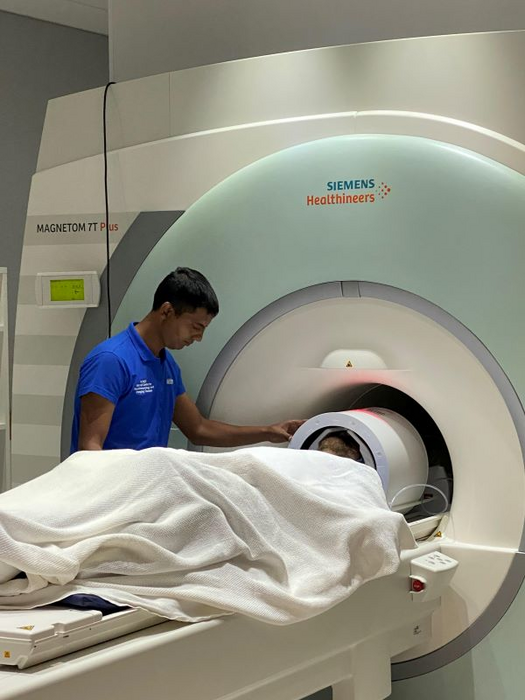7T MRI Used to Investigate Impact of COVID and Chronic Fatigue Syndrome on the Brain
 Griffith University researchers have used an ultra-high field MRI (7T) to investigate how COVID-19 and myalgic encephalomyelitis/chronic fatigue syndrome (ME/CFS) mirror the same effects on the brain structure. The findings ‘Brainstem volume changes in myalgic encephalomyelitis/chronic fatigue syndrome and Long COVID patients’ have been published in Frontiers in Neuroscience.
Griffith University researchers have used an ultra-high field MRI (7T) to investigate how COVID-19 and myalgic encephalomyelitis/chronic fatigue syndrome (ME/CFS) mirror the same effects on the brain structure. The findings ‘Brainstem volume changes in myalgic encephalomyelitis/chronic fatigue syndrome and Long COVID patients’ have been published in Frontiers in Neuroscience.
Dr Sonya Marshall-Gradisnik, Director of Griffith’s National Centre for Neuroimmunology and Emerging Diseases and also works at the university’s Menzies Health Institute Queensland, said the purpose of the study was to demonstrate the potential consistencies between the ME/CFS and Long COVID patients.
“We primarily used the 7T MRI to research the brainstem and its sub regions as it helps to resolve brain structures more precisely to discover abnormalities that other MRIs aren’t able to detect,” Dr Marshall- Gradisnik said.
Studies show that up to 43% of people infected by SARS-CoV-2 do not recover fully and develop long COVID in all cohorts, even in young adults, students, and children. Further, 13-58% of long COVID patients met ME/CFS and symptoms like brain fog, fatigue, pain, and autonomic dysfunction are similar in ME/CFS and long COVID patients, according to recent studies.
Lead author Dr Kiran Thapaliya said the 7T MRI showed the brainstem was significantly larger in ME/CFS and Long COVID patients compared to those who did not suffer from the same ailments.
“It also showed similar volumes of the brainstem in patients which could be the reason Long COVID patients exhibit all common core symptoms of ME/CFS,” Dr Thapaliya said.
“We also discovered smaller midbrain volumes were associated with more severe breathing difficulty in ME/CFS and Long COVID patients.
“Therefore, brainstem dysfunction in ME/CFS and Long COVID patients could contribute to their neurological, cardiorespiratory symptoms, and movement disorder.”
The 7T MRI used in the study is one of only two in Australia.